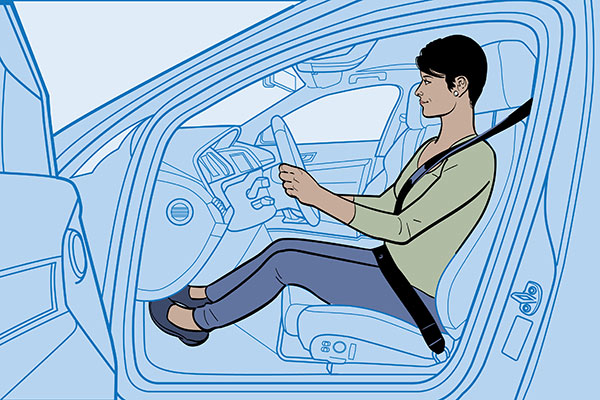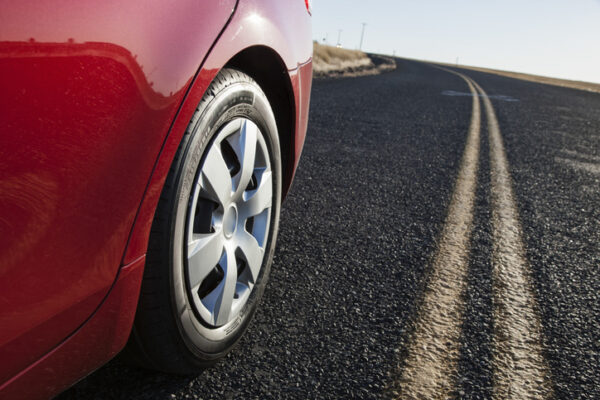Kids in school buses, children on foot and bikes, harried parents in cars: Back-to-school days bring congestion—and an increase in potential hazards.
“This can be a dangerous time because children—as well as drivers—are adjusting to back-to-school routines,” says Alex Epstein, director of Transportation Safety for the National Safety Council (NSC).
Fortunately, a few key tips can help improve safety for everyone. Here’s what Epstein recommends that drivers be aware of, as well as some reminders for parents to share with their kids.
Back-To-School Driving Tips For Parents
 Driving in the School Zone Area
Driving in the School Zone Area
- Slow down and drive extra cautiously.
- Don’t load or unload children across the street from the school.
- Don’t double park; it blocks visibility for other children and vehicles.
- When flashers are blinking, stop and yield to pedestrians crossing the crosswalk or intersection.
- Be prepared for kids to appear in unexpected places, like from between parked cars; if they’re on bikes, prepare for them to turn in front of you without looking or signaling.
- If you need to use your phone, be sure you’re pulled over safely.
- Watch for kids walking while looking at their phones. One study found that a full 20 percent of high school students cross the street while distracted.
- If possible, carpool to reduce the number of cars at school.
- Don’t ever block a crosswalk; it forces pedestrians to go around you and could put them in the path of moving traffic.
Driving Safely When You See a School Bus
- Most of the children who lose their lives in bus-related incidents are four to seven years old and on foot, according to the NSC. They’re hit by the bus or by a motorist passing a bus that’s stopped to load or unload children—something that’s illegal in all 50 states.
- If you’re driving behind a school bus, allow a greater following distance than if you were driving behind a car—at least three car lengths.
- Stay alert for flashing lights on a bus, which warn drivers of an impending stop. Treat yellow flashing lights the same as a yellow stop light and decrease your speed. Stop when you see red flashing lights.
- The area 10 feet around a school bus is the most dangerous for children; stop far enough away to allow them space to safely enter and exit the bus.
Back-To-School Safety Tips For Children
Staying Safe When Taking the Bus to School
- Take your time and pay attention every time you get on and off the bus. If a hand railing is available, use it.
- Always wait for the bus at the spot where it arrives. And wait until the bus is completely stopped—with its stop arm extended—before you approach to board or stand to exit.
- If seat belts are available, buckle up.
- Never cross in front of the bus. If you must, walk at least 10 feet in front of it and make sure any drivers can see you. Make eye contact and wait for them to wave you on before crossing.
Walking to School Safely
- Don’t walk to school with headphones in your ears or while looking at your phone.
- Walk on the sidewalk; if there’s no sidewalk and you must walk in the street, walk facing traffic.
- Before crossing the street, stop and look left, right and left again to see if cars are coming.
- Always cross the street at crosswalks. If no crosswalk is available, cross at intersections; never in the middle.
- Remember that there’s safety—and visibility—in numbers. Whenever possible, walk in groups rather than alone.
- If a stranger approaches you and offers you a ride home, don’t answer—run away. Head into a store or restaurant if you’re not near a safe spot like your school. And if you feel like you’re in danger, yell for help.
Read more life-saving pedestrian safety tips.
Riding a Bike to School
- Always wear bright-colored clothing and a helmet that’s fitted and secured properly.
- Ride single file on the right side of the road; come to a complete stop before crossing streets and walk the bike across.
- Watch for opening car doors and other hazards.
- Use hand signals when turning.
Read more bicycle safety tips.
When it comes to saving money on auto insurance, it’s child’s play. Get a fast, free quote from GEICO and see how much you could save.
Read more: Back-To-School Survival Guide
By Maridel Reyes











Glenn A Reeman says,
School buses are above a cars window.That means we can see if drivers are talking on cell phones.Not looking at road in front of them.Some drivers and parents are clueless to the dangers of students going on and off the bus.Drivers passing on right were studends get off bus on sidewalks ,grass,.Passing with red lights on.Some blow there horns to hurry the loadind and discharge of students.Studends crossing back of bus Or front were they should be students talking on cell phone or head phones doing this with drivers coming talking on there cell phones. Parents Dont depend on some one else for your child safety talk to them yourself.
Mary Tate says,
Would have like you to address the laws when there are 4 lanes (2 and 2) for stopping on the opposite side of the bus etc.
Anne chan says,
There are so good tips for aware of the school bus issue, eve has a problem to yet I will be paying attention from now on. Thank for all!
Gil Ghaner says,
I DRIVE SCHOOL BUSES FOR MY RETIREMENT. AS FAR AS SAFETY GOES MOST DRIVERS DO NOT OBEY SCHOOL SPEED LIMITS, IN PA 15 MPH. THIS IS NED LESS TO SAY VERY UNSAFE
Jorge Morales says,
It’s true all about school buses, but they should remember, they’re transporting kids and should always be careful and be better safe drivers. I’ve seen some of them do things that break the law… It happened this morning where I was leaving a garage and the driver as to pick up two students sopped almost in front of me blocking my view and I had to make a sharp cut because of his/her parking. This was on a busy street and got to close to the front part of my vehicle and couldn’t back up due to a vehicle behind me, so I had to make a sharp turn to get out avoiding an accident. He/She started to blow the horn on me very loudly.
Teresa says,
Thanks for the school bus info. I was not sure if traffic is required to stop on a divided highway. What about a four lane with no divider? I see a lot of confusion about this. Some cars stop and some don’t when they are on the far lane away from the bus facing it.
Ilene says,
Thanks for including school bus safety. As a retired school bus driver I, and all drivers, appreciate the reminders.
Greg Funk says,
People definitely need to review the rules and regulations of the road. I’ve seen drivers nearly cause accidents by coming to a stop on the opposite side of a divided road when the see a bus lights flash red. You do not pass a bus dependent on the type of road.
Secondly, it’s hard to be patient when the bus stops every other house or so to drop one kid off. Since when did we start curb-side-service? What happened to “School Bus Stops”? Have we become so insecure as parents that we think our kid is unsafe being dropped off a few houses or a block from home?
Thomas says,
We all must work to keep our children safe ! I seldom see a school bus driver who is not speeding .
Taylor says,
The signaling stop device with cameras will keep better safe.
Franci Almanzar says,
I will be stopping for sure when the bus lights is red.